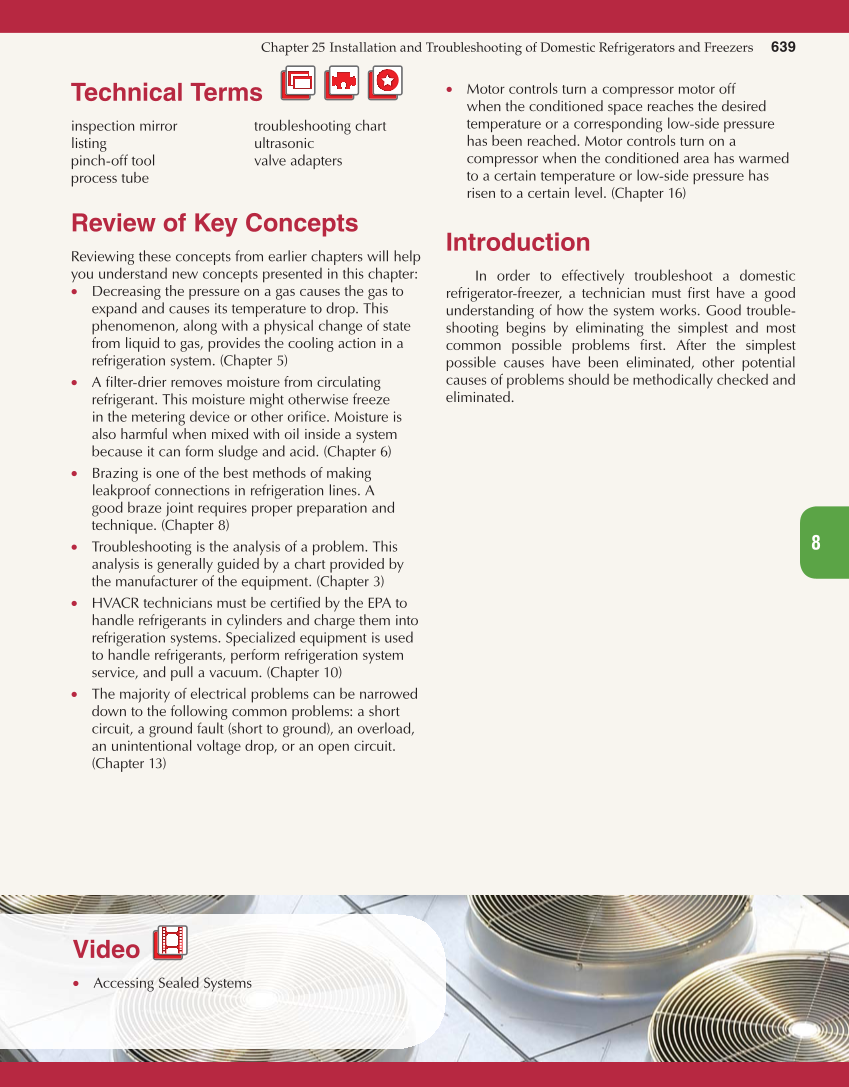Chapter 25 Installation and Troubleshooting of Domestic Refrigerators and Freezers 639 8 Technical Terms inspection mirror listing pinch-off tool process tube troubleshooting chart ultrasonic valve adapters Review of Key Concepts Reviewing these concepts from earlier chapters will help you understand new concepts presented in this chapter: • Decreasing the pressure on a gas causes the gas to expand and causes its temperature to drop. This phenomenon, along with a physical change of state from liquid to gas, provides the cooling action in a refrigeration system. (Chapter 5) • A filter-drier removes moisture from circulating refrigerant. This moisture might otherwise freeze in the metering device or other orifice. Moisture is also harmful when mixed with oil inside a system because it can form sludge and acid. (Chapter 6) • Brazing is one of the best methods of making leakproof connections in refrigeration lines. A good braze joint requires proper preparation and technique. (Chapter 8) • Troubleshooting is the analysis of a problem. This analysis is generally guided by a chart provided by the manufacturer of the equipment. (Chapter 3) • HVACR technicians must be certified by the EPA to handle refrigerants in cylinders and charge them into refrigeration systems. Specialized equipment is used to handle refrigerants, perform refrigeration system service, and pull a vacuum. (Chapter 10) • The majority of electrical problems can be narrowed down to the following common problems: a short circuit, a ground fault (short to ground), an overload, an unintentional voltage drop, or an open circuit. (Chapter 13) • Motor controls turn a compressor motor off when the conditioned space reaches the desired temperature or a corresponding low-side pressure has been reached. Motor controls turn on a compressor when the conditioned area has warmed to a certain temperature or low-side pressure has risen to a certain level. (Chapter 16) Introduction In order to effectively troubleshoot a domestic refrigerator-freezer, a technician must first have a good understanding of how the system works. Good trouble- shooting begins by eliminating the simplest and most common possible problems first. After the simplest possible causes have been eliminated, other potential causes of problems should be methodically checked and eliminated. Video • Accessing Sealed Systems
